
Sulawesi, formerly known as Celebes, is an island in Indonesia. One of the four Greater Sunda Islands, and the world's eleventh-largest island, it is situated east of Borneo, west of the Maluku Islands, and south of Mindanao and the Sulu Archipelago. Within Indonesia, only Sumatra, Borneo and Papua are larger in territory, and only Java and Sumatra have larger populations.

Trepangers from the Makassar region of Sulawesi began visiting the coast of northern Australia sometime around the middle of the 1700s, first in the Kimberley region, and some decades later in Arnhem Land, to collect and process trepang, a marine invertebrate sea cucumber prized for its culinary value generally and for its medicinal properties in Chinese markets. The term Makassan is generally used to apply to all the trepangers who came to Australia, although some were from other islands in the Indonesian Archipelago, including Timor, Rote and Aru.

Grabouw is a town located in the Western Cape province of South Africa.

Gowa is a regency in the province of South Sulawesi, Indonesia. It has an area of 1,883 km² and a population of 652,329 at the 2010 Census. The majority of the Regency lies within the official metropolitan area of the city of Makassar, including the regency's administrative capital at Sungguminasa. The hill resort of Malino is within the eastern (non-metropolitan) part of the regency.

The Maritime Museum is located in the old Sunda Kelapa harbor area in Penjaringan Administrative Village, Penjaringan Subdistrict, Jakarta, Indonesia. The museum was inaugurated inside the former Dutch East India Company warehouses. The museum focuses on the maritime history of Indonesia and the importance of the sea to the economy of present-day Indonesia.
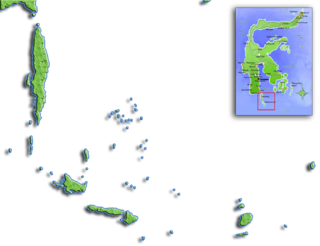
Taka Bonerate National Park is a marine park which includes the Takabonerate atoll islands, located in the Flores Sea, south of Sulawesi island of Indonesia.

Fort Rotterdam is a 17th-century fort in Makassar on the island of Sulawesi in Indonesia. It is a Dutch fort built on top of an existing fort of the Gowa Kingdom. The first fort on the site was constructed by the a local sultan in around 1634, to counter Dutch encroachments. The site was ceded to the Dutch under the Treaty of Bongaya, and they completely rebuilt it between 1673 and 1679. It had six bastions and was surrounded by a seven meter high rampart and a two meter deep moat.

The Mandarese are an ethnic group in the Indonesian province of West Sulawesi in Sulawesi. The Mandar language belongs to the Northern subgroup of the South Sulawesi languages group of the Malayo-Polynesian branch of the Austronesian language family. The closest language to Mandar is the Toraja-Sa'dan language.
Coastal Konjo is an Austronesian language of Sulawesi, Indonesia, which belongs to the Makassaric branch of the South Sulawesi subgroup. It is spoken along the coast in the southeastern corner of South Sulawesi in the regencies of Sinjai, Bulukumba and Bantaeng. It is closely related to, but distinct from Highland Konjo, which also belongs to the Makassaric languages.
Highland Konjo is an Austronesian language of Sulawesi, Indonesia, which belongs to the Makassaric branch of the South Sulawesi subgroup. It is spoken in the interior parts of Bone, Bulukumba, Gowa, and Sinjai regencies of South Sulawesi province, in the area to the northwest of Mount Lompobatang. It is closely related to, but distinct from Coastal Konjo, which also belongs to the Makassaric languages.
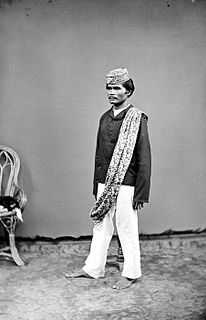
The Makassar people are an ethnic group that inhabits the southern part of the South Peninsula, Sulawesi in Indonesia. They live around Makassar, the capital city of the province of South Sulawesi, as well as the Konjo highlands, the coastal areas, and the Selayar and Spermonde islands. They speak Makassarese, which is closely related to Buginese and also a Malay creole called Makassar Malay.
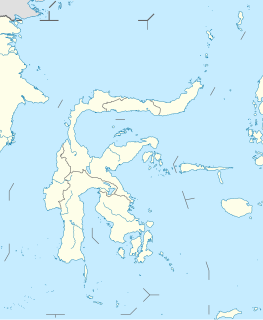
Tana Toa is a village in the Kajang district, Bulukumba Regency in South Sulawesi, Indonesia. The village is located in the east coast of South Sulawesi, about 20 kilometres (12 mi) from town of Kajang, about 56 kilometres (35 mi) north of Bulukumba and 210 kilometres (130 mi) southeast of Makassar. The village is inhabited majority by Kajang tribe. The village is famous throughout Makassar territory as the place of great mystical power.
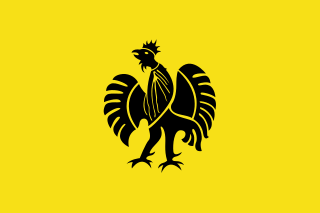
Sultanate of Gowa, was one of the great kingdoms and the most successful kingdom in the South Sulawesi region. People of this kingdom come from the Makassar tribe who lived in the south end and the west coast of southern Sulawesi.

The Makassar kingdom of Gowa emerged around 1300 as one of many agrarian chiefdoms in the Indonesian peninsula of South Sulawesi. From the sixteenth century onward, Gowa and its coastal ally Talloq became the first power to dominate most of the peninsula. This political accomplishment was enabled by wide-ranging administrative and military reforms, including the creation of the first bureaucracy in South Sulawesi. Sixteenth-century Gowa has been characterized as an empire and the early history of the kingdom has been analyzed as an example of state formation.
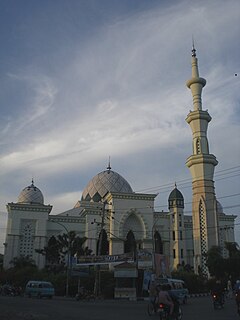
Great Mosque of Makassar is a mosque located in Makassar, Indonesia, and the main mosque of South Sulawesi Province. The construction begun in 1948 and completed in 1949. Since then the mosque underwent a renovation from 1999 to 2005. The mosque can accommodate up to 10,000 worshipers, making it one of the largest mosques in Southeast Asia.
The Makassaric languages are a group of languages spoken in the southern part of South Sulawesi province, Indonesia, and make up one of the branches of the South Sulawesi subgroup in the Austronesian language family. The most prominent member of this group is Makassarese, with over two million speakers in the city of Makassar and neighboring areas.
The Daii or Dhay'yi are an indigenous Australian people of the Northern Territory.

Padewakang were traditional boat used by the Bugis, Mandar, and Makassar people of South Sulawesi. Padewakang were used for long distance voyages serving the south Sulawesi kingdoms.



















